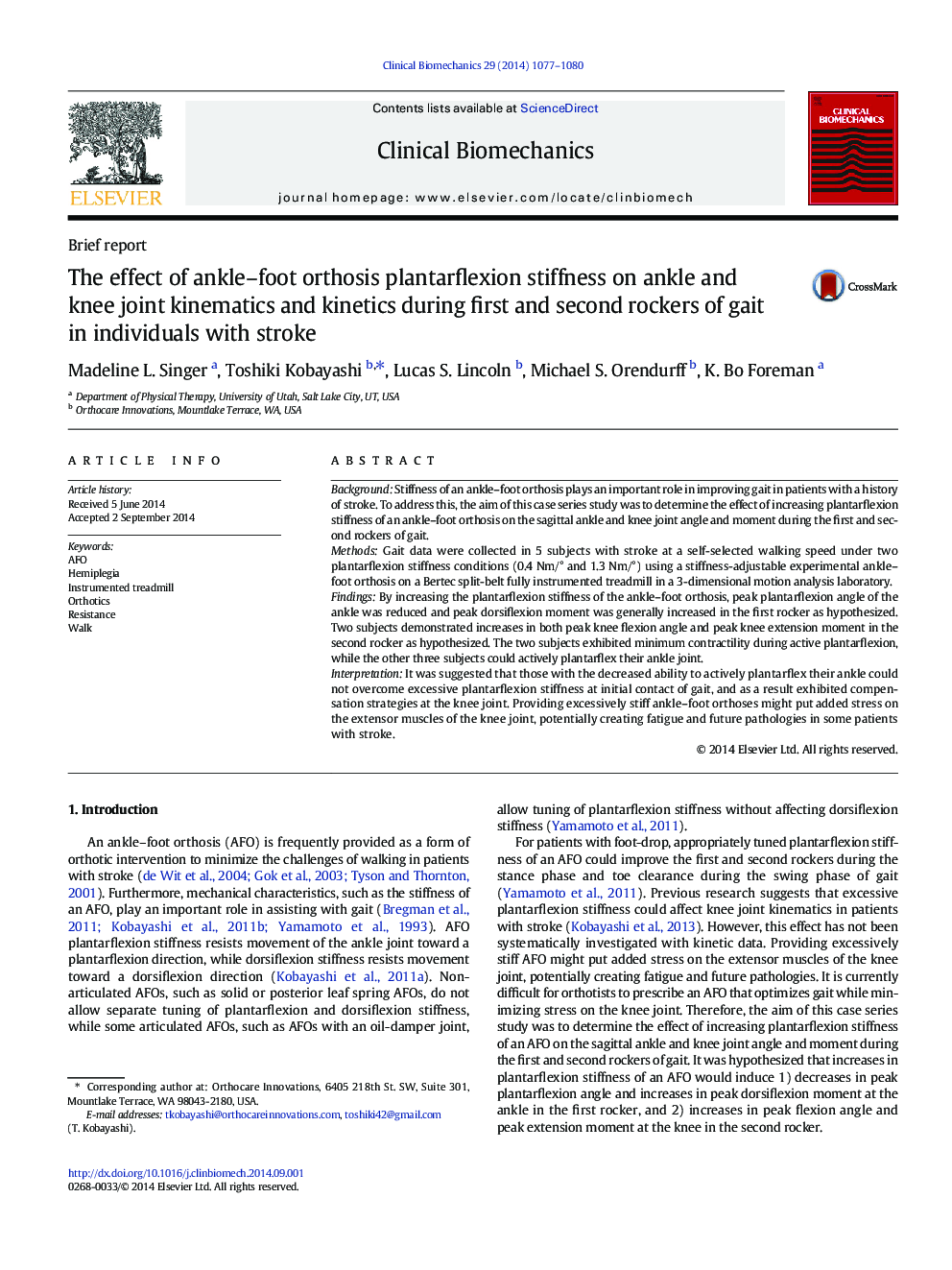| Article ID | Journal | Published Year | Pages | File Type |
|---|---|---|---|---|
| 4050311 | Clinical Biomechanics | 2014 | 4 Pages |
•A stiffness-adjustable experimental ankle–foot orthosis was developed.•Effect of plantarflexion stiffness of the AFO on stroke gait was investigated.•Ankle angles and moments were affected in all subjects.•Knee angles and moments were affected in some subjects.•Plantarflexion stiffness of AFOs should be optimized for each patient.
BackgroundStiffness of an ankle–foot orthosis plays an important role in improving gait in patients with a history of stroke. To address this, the aim of this case series study was to determine the effect of increasing plantarflexion stiffness of an ankle–foot orthosis on the sagittal ankle and knee joint angle and moment during the first and second rockers of gait.MethodsGait data were collected in 5 subjects with stroke at a self-selected walking speed under two plantarflexion stiffness conditions (0.4 Nm/° and 1.3 Nm/°) using a stiffness-adjustable experimental ankle–foot orthosis on a Bertec split-belt fully instrumented treadmill in a 3-dimensional motion analysis laboratory.FindingsBy increasing the plantarflexion stiffness of the ankle–foot orthosis, peak plantarflexion angle of the ankle was reduced and peak dorsiflexion moment was generally increased in the first rocker as hypothesized. Two subjects demonstrated increases in both peak knee flexion angle and peak knee extension moment in the second rocker as hypothesized. The two subjects exhibited minimum contractility during active plantarflexion, while the other three subjects could actively plantarflex their ankle joint.InterpretationIt was suggested that those with the decreased ability to actively plantarflex their ankle could not overcome excessive plantarflexion stiffness at initial contact of gait, and as a result exhibited compensation strategies at the knee joint. Providing excessively stiff ankle–foot orthoses might put added stress on the extensor muscles of the knee joint, potentially creating fatigue and future pathologies in some patients with stroke.
